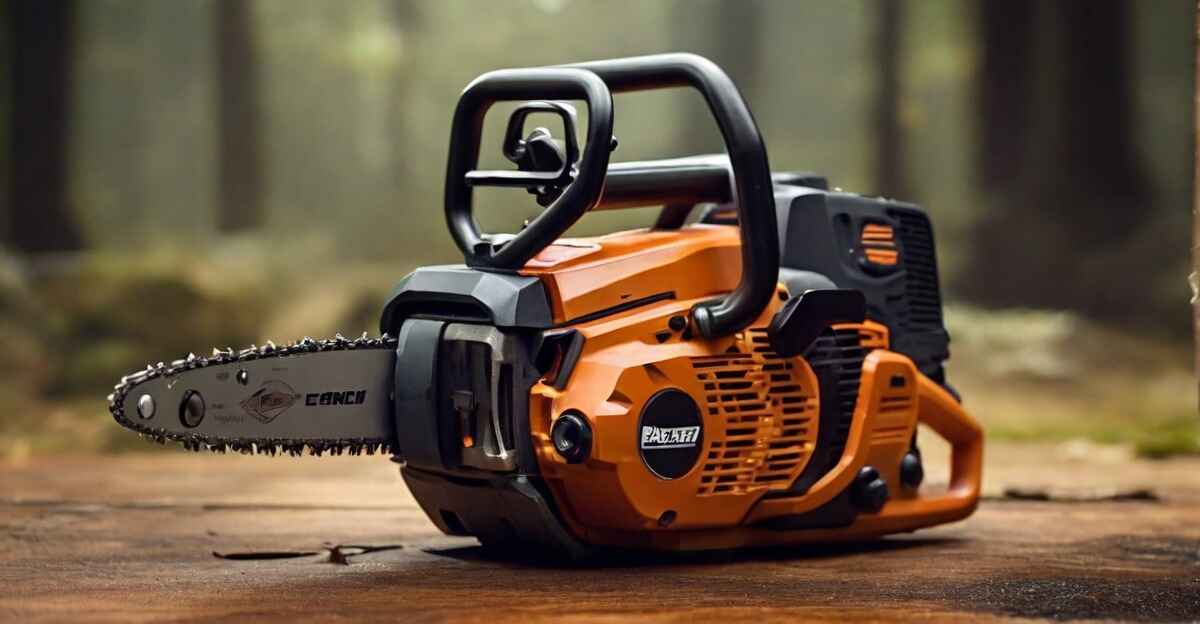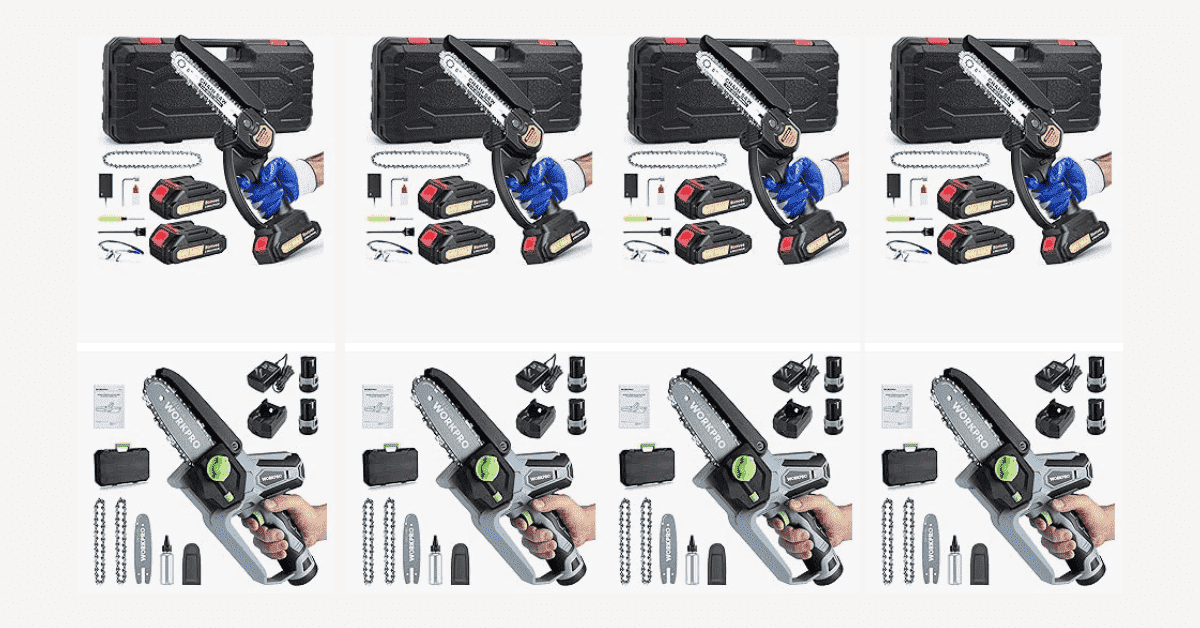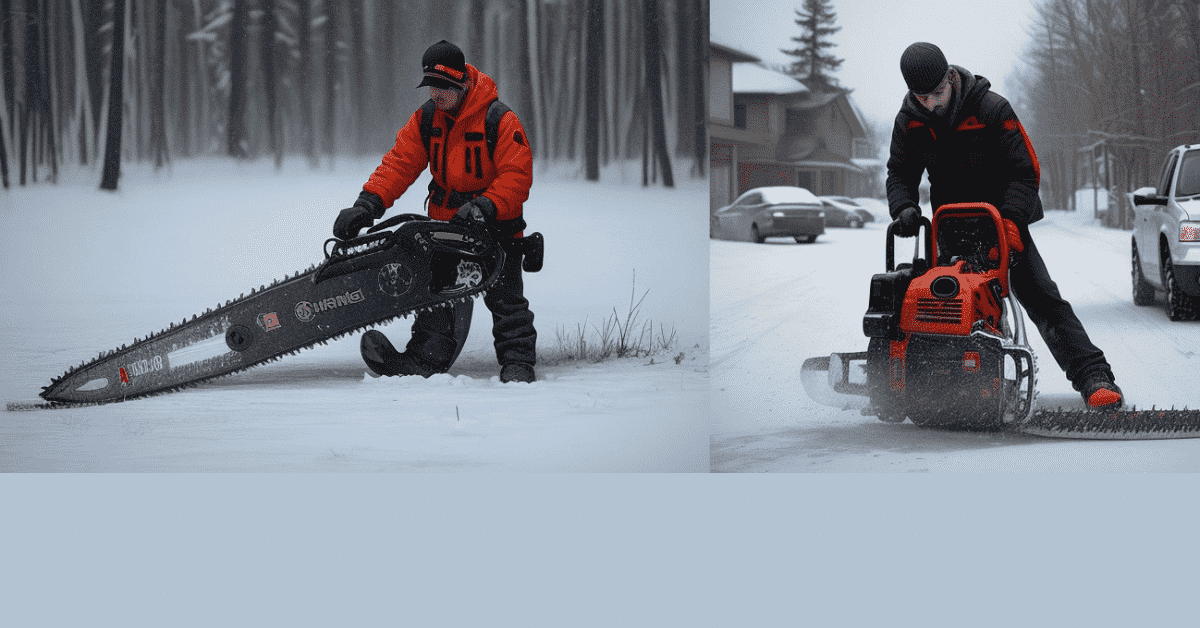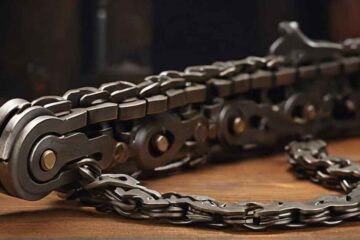A chainsaw is an essential tool for many tasks, including cutting trees and preparing firewood. Modifications can improve their performance, just like any engine. By reshaping the intake and exhaust ports, you boost airflow and power. Here’s how chainsaw porting works and how it optimizes airflow and power. It helps users get better performance out of their chainsaws. This guide aims to clarify the process and answer common questions.
Understanding Chainsaw Porting
Like any engine, chainsaws can be improved to cut wood more efficiently. Chainsaw porting modifies the airflow in an engine to unleash more power. What is it, and is it right for you? Check out the intricacies of chainsaw porting.
What is chainsaw porting?
It’s like a tiny engine room in the chainsaw’s cylinder. Pumps inside draw in air and fuel, then expel exhaust. Chainsaw porting changes the size, shape, and timing of the intake and exhaust ports. Your engine will operate more efficiently if you open wider windows and doors.
Tools and Materials Required
Grab your safety gear and tools before you start porting.
- Dremel rotary tool
- Carbide burrs
- Sanding rolls
- Safety goggles
- Gloves
- Mask
- Protective clothing
Benefits of Porting:
- Increased Power: Muscle gains are the most noticeable benefit. Using a well-ported chainsaw can result in power gains of up to 20%.
- Improved Torque: Porting adds muscle and strengthens grip. With more torque, it’s easier to handle the newfound power and maintain control.
- Enhanced Responsiveness: Consider a chainsaw that reacts like a race car. By porting, you can accelerate faster and control each cut better.
- Potential Fuel Efficiency: A more efficient airflow can lead to a slight boost in fuel economy.
Drawbacks to Consider:
- Complexity: The process of porting is not easy. It takes tools, knowledge, and a steady hand. Leave this to the pros.
- Engine Damage: You don’t want to mess with the delicate balance of an engine. It’s expensive to repair or even replace a cylinder if you don’t port it right.
- Reduced Lifespan: Extra power puts stress on the engine, shortening its lifespan.
- Warranty Voiding: You can void your chainsaw’s warranty if you modify it. Think about the potential benefits vs. losing manufacturer protection.
Is porting right for you?
It depends on your needs and expertise. You can unlock your chainsaw’s full potential if you’re a pro.
Porting might be overkill for casual users happy with the stock performance. It’s usually more risky and complicated than it’s worth.
Understanding the risks and rewards
There’s a double edge to chainsaw porting. In spite of its power and responsiveness, it comes with potential dangers. Before you take the plunge, weigh the benefits against the risks. For valuable chainsaws for beginners, you might want to consult a mechanic.
Beyond Porting: Alternative Performance Boosters
Don’t worry if engine modifications make you shiver! You can give your chainsaw a performance boost without porting. These include:
- High-Performance Air Filter: Make your engine breathe easier by upgrading to a high-flow air filter.
- Premium Fuel Mix: A higher-octane fuel mix can boost performance.
- Proper Maintenance: Regular cleaning, sharpening, and tune-ups extend the life of your chainsaw.
These methods are more subtle than porting, but they’re safer and easier to use.
The Porting Process Explained: Unleashing the Beast Within Your Chainsaw
Chainsaw porting is enticing for its power, but it takes a methodical approach. You’ll learn how to turn your trusty tool into a cutting machine. Beginners shouldn’t try this. It can damage your engine if done wrong.
Safety First: Make safety your top priority. Keep your eyes, hands, and ears protected. Put the chainsaw in a stable vice or clamp to make it easier to use.
Preparing for the surgery:
Gathering Tools:
- Die grinder: Your trusty weapon for shaping the ports.
- Rotary files: coarse and fine files to shape ports.
- Porting template: Makes sure new ports’ dimensions and placement are perfect.
- Dial caliper and micrometer: measurements and verifications.
- Protective coverings: Tape cylinder bases and crankcases so debris doesn’t get in.
Cylinder Removal:
- It’s time to drain the oil and fuel.
- You must disconnect the spark plug and the muffler.
- Disconnect the cylinder from the engine block by removing the head bolts.
- Make sure the cylinder base and gasket are clean.
The Art of Porting:
Marking the territory:
- With clamps or adhesive, attach the porting template to the cylinder.
- Mark or scribe the port outlines onto the cylinder.
- Verify the markings match the template.
Sculpting the New Flow:
- For the upcoming noise, wear safety glasses and earplugs.
- Make sure the die grinder has the right rotary file.
- Begin grinding away the material, following the marked lines, and maintaining the angles.
- Check your progress with the caliper and micrometer often, and take your time.
- Smooth transitions and no gouging or chipping.
Verifying the precision:
- Sculpt all ports, then remove the template and clean the cylinder.
- Verify each port’s dimensions with a caliper and micrometer.
- Correcting discrepancies requires grinding, so be patient.
Reassembly and Testing:
Putting it Back Together:
- Reattach the cylinder to the engine block and replace the cylinder gasket.
- Using a torque wrench, tighten the head bolts.
- Connect the spark plug, muffler, and other disconnected parts.
- Make sure the oil and fuel are filled up correctly.
The Moment of Truth:
- Test the chainsaw in a safe, controlled environment.
- Be on the lookout for weird noises or smoke.
- Focus on power, torque, and responsiveness.
- Consult a mechanic if something’s wrong.
Remember:
- The process is complex and requires specialized skills. Consult a mechanic if you’re unsure.
- Wear protective gear and prioritize safety.
- For success, you need precise measurements and execution.
- Warranty voids if your chainsaw is modified, including ported.
Well done! Chainsaw porting is now a breeze for you. Take on those tough logs with your tool’s beast.
Tips and Considerations for Porting Success:
Choosing the Right Chainsaw:
- Cylinder Design: Some cylinders aren’t portable. Mechanics or research the suitability of your model.
- Engine Type: Generally, two-strokes are easier to port than four-strokes.
Ensuring Precision:
- Template Usage: Use a high-quality porting template.
- Measurements Matter: Check all port dimensions with calipers and micrometers.
- Go Slow: Don’t rush, work in small increments, and don’t rush.
Safety First:
- Proper Gear: Protect your eyes, ears, and hands.
- Stable Workbench: Use a vice or clamp to secure the chainsaw.
- Cleanliness: It is key. Make sure the cylinder and work area are clean, too.
Seeking Professional Help:
- Consult a Mechanic: Seek advice from a mechanic if you’re unsure.
- Warranty Voiding: Remember, porting voids your chainsaw’s warranty.
Alternative performance boosters:
- High-flow air filter: For a slight power boost.
- Premium fuel mix: enhances performance slightly.
- Regular Maintenance: Maintains and extends the lifespan of your chainsaw.
Remember: Not everyone should port. Don’t modify your chainsaw unless you’re confident you can handle it.
You can unlock your chainsaw’s hidden potential by following these tips and considerations.
FAQ
How much power increase can I expect?
Porting can yield moderate power gains, but the exact amount varies depending on the chainsaw model.
Will porting affect the chainsaw’s reliability?
Proper porting shouldn’t affect reliability much. Porting aggressively or making mistakes can affect engine longevity.
How much does it cost to have a chainsaw ported?
Chainsaw porting costs vary depending on the model and extent of work. There is usually a $100 to $300 cost associated with porting a vehicle.
Should I hire a pro or do it myself?
Porting requires precision and mechanical know-how. Check with a professional or an experienced mechanic if you’re not sure.
Are there any risks associated with porting?
Correct porting can damage engines, reduce their lifespan, or cause malfunctions. Throughout the process, it’s important to proceed cautiously.
Conclusion
When done right, porting your chainsaw can actually boost its performance. Using this guide, you’ll learn how to port a chainsaw for optimum performance and longevity. Remember, this requires both mechanical expertise and attention to detail. Hopefully, you have a clear understanding of how to port a chainsaw.




